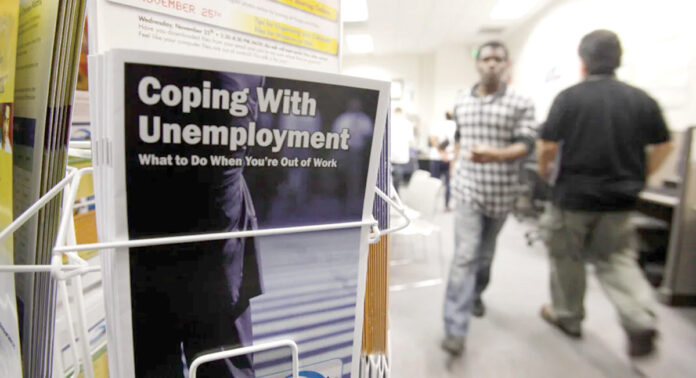
PROVIDENCE – If the state’s monthly labor market report should usually be taken with a grain of salt, the latest statistics call for a bucket full.
Even Matthew Weldon, the R.I. Department of Labor and Training director, questioned the accuracy of the October jobs report, which showed the state lost 2,100 jobs from the month prior. The data, suggests that nearly two-thirds of the jobs lost – 1,300 – were in state government.
But Weldon wasn’t buying it.
“There’s no situation in Rhode Island that happened that reconciles that point,” he said.
Indeed, the overall state job numbers have fluctuated dramatically in recent months, rising by 3,000 from August to September, according to revised numbers, only to fall again in October. The 900 jobs added from August to October, including 100 in state government, offers a more telling picture, Weldon said.
Leonard Lardaro, a University of Rhode Island economist who regularly analyzes state economic conditions, described the August-to-September labor force jump as “ridiculous.”
Particularly when contrasted with resident employment numbers, which spiked by 43,000 in that same time frame, the statistics just don’t make sense, Lardaro said.
“In all my time analyzing Rhode Island’s economy, I have never seen a divergence between the two measures anywhere near what the current data appear to show,” Lardaro stated in his September Current Conditions Index report.
In an interview on Tuesday, Lardaro continued to question the state’s monthly economic data.
“Personally, I think right now we’re kind of going blind as far as this goes,” he said.
In fairness, monthly labor market data is rarely 100% accurate, since it relies on U.S. Bureau of Labor Statistics sample numbers and surveys that are typically revised later on. Both Weldon and Lardaro agreed that a three- or even six-month trend was a better reflection of the state economy than a single month of numbers.
Particularly in the final few months of the calendar year, the monthly reports tend to lose accuracy, since they are farther away chronologically from the BLS benchmarks, Lardaro said.
This year, the monthly numbers are more questionable than usual, though, which Lardaro and Lisa Dutilly, DLT’s chief of research and analysis, chalked up to the pandemic. The federal formula used to estimate labor force data relies in part on comparison to the year prior, and the volatility of 2020 makes it an unreliable point of reference, Dutilly said.
While state officials aren’t to blame for the federal modeling woes, Lardaro faulted them for giving too much weight to positive data points such as a lower unemployment rate, which he also views as inaccurate.
There may be fewer people who are unemployed and actively looking for jobs, but there are also thousands who have left the labor force – retiring or simply waiting it out – which skews employment rates, too, he said.
“We really improved for the wrong reasons in terms of losing people in the labor force,” Lardaro said. “If you really want to understand the economy and improve it, you’ve got to be accurate.”
At this point, Lardaro was skeptical that accuracy would come until February, when the next “rebenchmarking” of labor market data is slated to occur.
Nancy Lavin is a PBN staff writer. You may reach her at LAvin@PBN.com.












